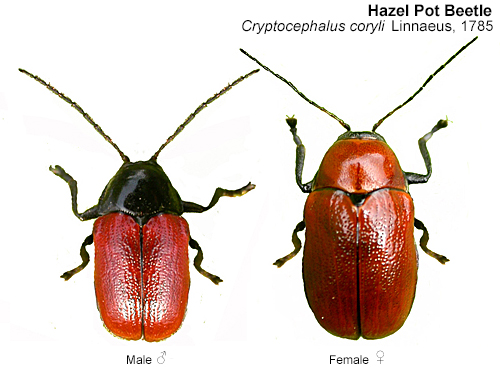Cryptocephalus
coryli (Linnaeus, 1758)  |
| Historically
recorded from two Nottinghamshire sites - Langford Moor
near Newark in 1899 and from Sherwood Forest between 1899
and 1907 (Thornley,
Kidson-Taylor, Hardy, Donisthorpe and Bedwell) with records from the late 1930's
and 1940. This large Cryptocephalus measures
around 8mm and was rediscovered in a small area of
Sherwood Forest CP in 2008 (Pendleton, T.A. and Pendleton, D.T.), which until recently was believed
to be the only site in the UK where it was known to still
occur. However, an email recieved in September 2012
implied that Cryptocephalus coryli is still
being recorded from the North Downs in Surrey, Woolmer
Forest in Hampshire and at one Lincolnshire site. In
2013, it was discovered at Clumber Park in
Nottinghamshire (Binding,
A.E. and Binding, A.). |
| .. |
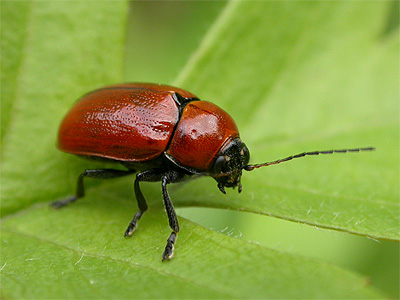 |
|
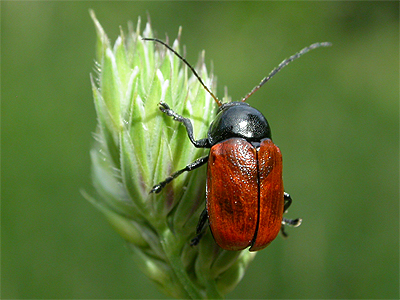 |
| |
|
|
Cryptocephalus fulvus (Goeze, 1777)  |
| A tiny
species, with adults measuring only around 2 - 2.5mm.
Known historically from Barrow Hill, Everton in north
Nottinghamshire (Chamberlin
1905), many former
Colliery sites will probably hold this beetle and in
recent years we have swept adults from St John's Wort
(Hypericum sp) growing at Warsop Main Pit Top, Gedling
Pit Top and Bevercotes Pit Wood. |
| .. |
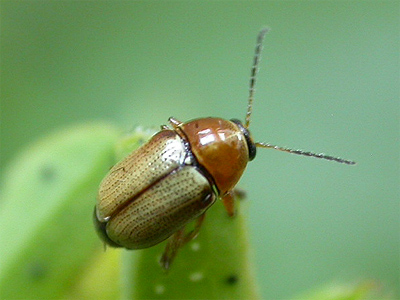 |
|
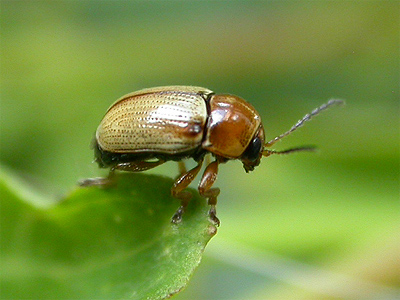 |
| |
|
|
Cryptocephalus labiatus (Linnaeus, 1761)  |
| Another very
small Cryptocephalus, C. labiatus is
considerably smaller than the more well known (but
much rarer) Cryptocephalus coryli. Recorded
historically from near Edwinstowe and at Sherwood Forest,
also at Barrow Hills, Everton in north Nottinghamshire
and from Langford Moor near Newark. We found C.
labiatus to be quite common on Birch scrub and
occasionally on Oak in the eastern-most section of Budby
South Forest at the end of June 2009 and have since
recorded it from Sallow at Warsop Main Pit Top, from Elm
at Warsop Wood and both Hazel and Birch at Gamston Wood
near Retford. |
| .. |
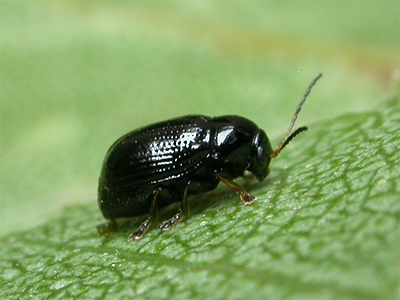 |
|
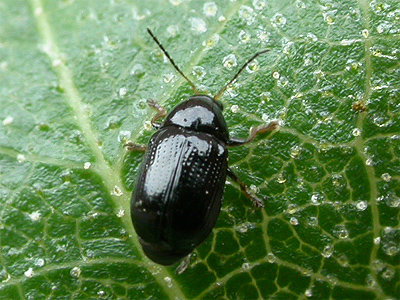 |
| |
|
|
Cryptocephalus moraei (Linnaeus, 1758)  |
| A rare species in Nottinghamshire. We
currently know of just three locations where this beetle
is found, but many of the old pit tops should be capable
of holding this species. It is found on St John's Wort (Hypericum)
but it took three visits to Gedling Pit Top in late June
and July 2010, before we swept this male from a sheltered
area there. Regular searches over two years at Warsop
Main Pit Top proved unsuccessful until 2011, when adults
were discovered in an area that had been previously been
regularly searched. Similarly, after spending a fruitless
few hours searching for this beetle at Bevercotes Pit
Wood in July 2010, we were amazed to find it within five
minutes of a search in June 2011, at the same location as
that searched in 2010. There are no Sherwood Forest NNR
records. |
| .. |
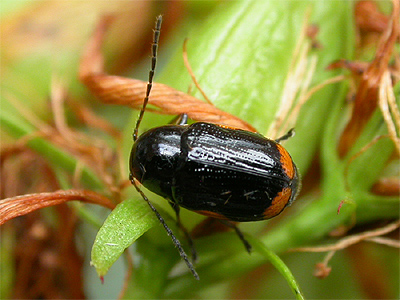 |
|
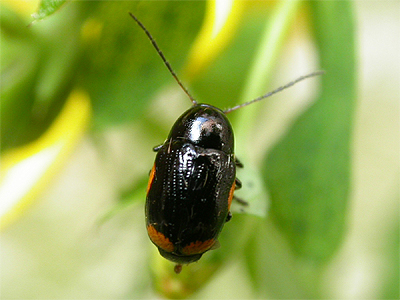 |
| |
|
|
Cryptocephalus parvulus (Müller, O.F., 1776)  |
| Known from
just a single Nottinghamshire site, Cryptocephalus
parvulus was recorded by P. Skidmore from King's
Wood at Bawtry, on the Nottinghamshire border with South
Yorkshire in 1983. It is not known if it still occurs
there and as the adults are found on Birch, it would be
expected to occur in the Sherwood Forest or Clumber Park
areas, but there are no published records from the area. |
| .. |
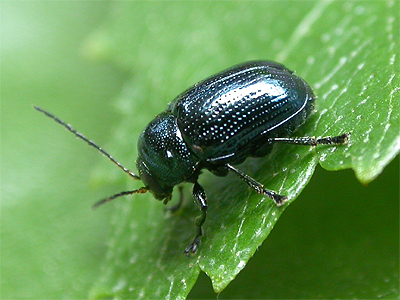 |
|
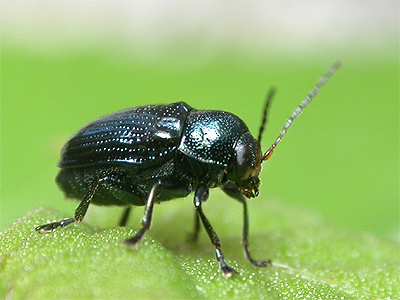 |
| |
|
|
Cryptocephalus pusillus (Fabricius, 1777)  |
| A small
species with adults measuring around 3mm maximum and a
variable amount of black on the elytra. We found C.
pusillus commonly on Alder, growing at the bottom of
a south-facing slope at Warsop Main Pit Top in July 2009.
Historically recorded from Sherwood Forest and
more recently from Sherwood Heath (Marsh, B. 2003). In June 2011, we found two adults on
coppiced Hazel at Gamston Wood near Retford and a single
adult was beaten from scrub at Bevercotes Pit Wood in
2017. |
| .. |
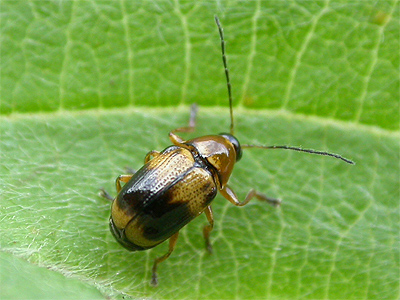 |
|
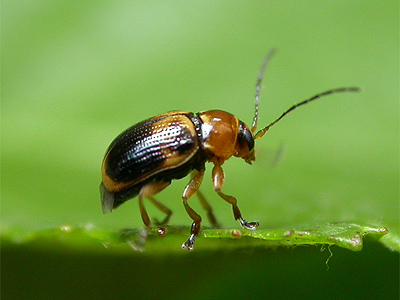 |
| |
|
|
Cryptocephalus querceti (Suffrian, 1848)  |
| A very rare Cryptocephalus beetle,
having RDB2 status and presently known from only a
handful of UK sites. The adults have a preference for
feeding on the epicormic growth on ancient/mature Oaks.
In Nottinghamshire, Cryptocephalus querceti only
occurs at Sherwood Forest, with recent records in 1998 (Lott, D.A.), 2010 (Alexander, K.N.A.)
and by
ourselves in 2011 when
we recorded it on three occasions. Despite several
targetted searches, we have not recorded this beetle since, but we did
find an old larval case under in accumulated leaf litter
and detritus, under the loose bark of an ancient Oak and
very close to the site of our 2011 records in May 2017. |
| .. |
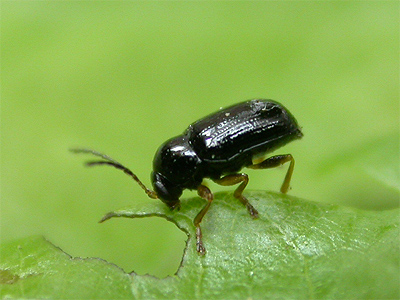 |
|
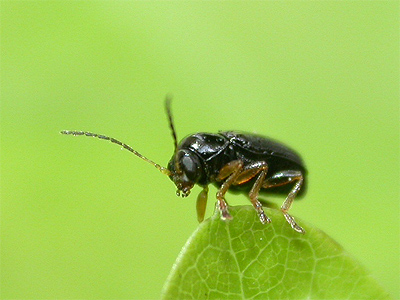 |


